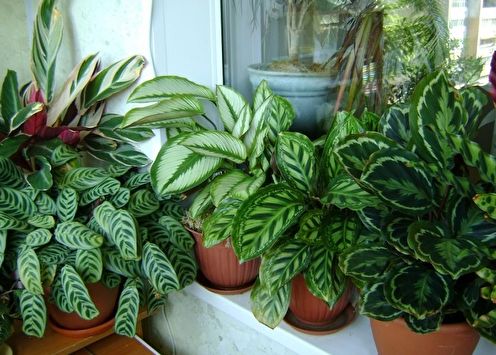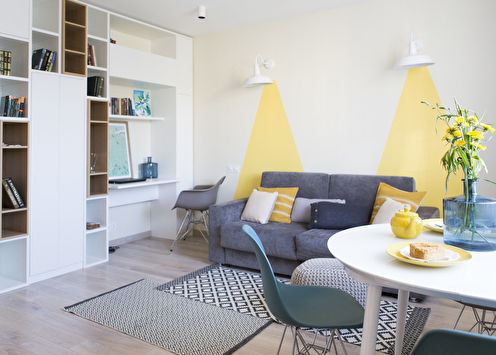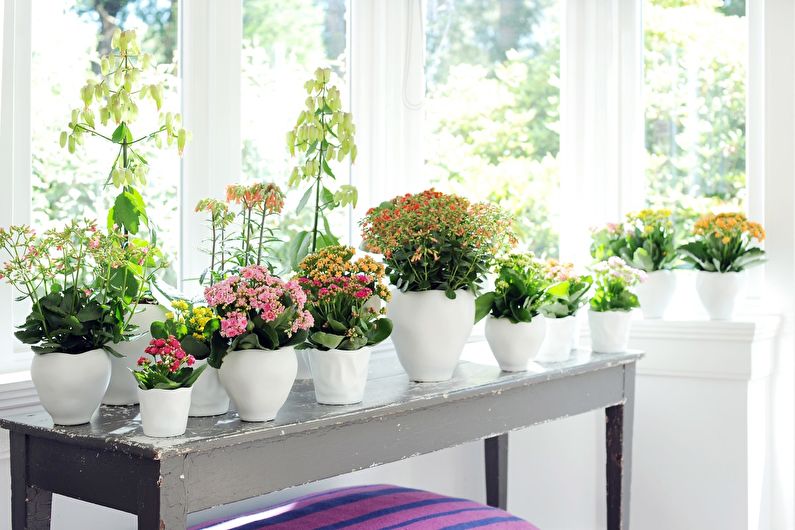
Many people have been familiar with Kalanchoe since childhood, and someone even applied its leaves during a cold - due to a shortage of drugs or an increased confidence in traditional medicine. In any case, the beautiful plant was not in vain loved by the hostesses and even today does not lose popularity. Our article is for those who are thinking about growing Kalanchoe, but do not know about the rules of care.
Features of Kalanchoe
Kalanchoe is a succulent plant native to tropical latitudes, accustomed to a humid climate.
Due to the fact that Kalanchoe accumulates water in its stems and leaves, these parts look quite massive. The plant can be distinguished by the small buds located on the edges of the leaves, which are also called airborne children. Once in the ground, they sprout easily, so even a novice florist can make such a "green friend" at home.
The healing properties of Kalanchoe have been known for a long time, due to which it was called the “tree of life”, just like the fat girl, which is usually called the “money tree”.
Flowers of decorative species are quite large in size and come in a variety of options: red, pink, white, purple and so on. Kalanchoe can become a real decoration for the home, since some of its varieties reach a height of several meters.
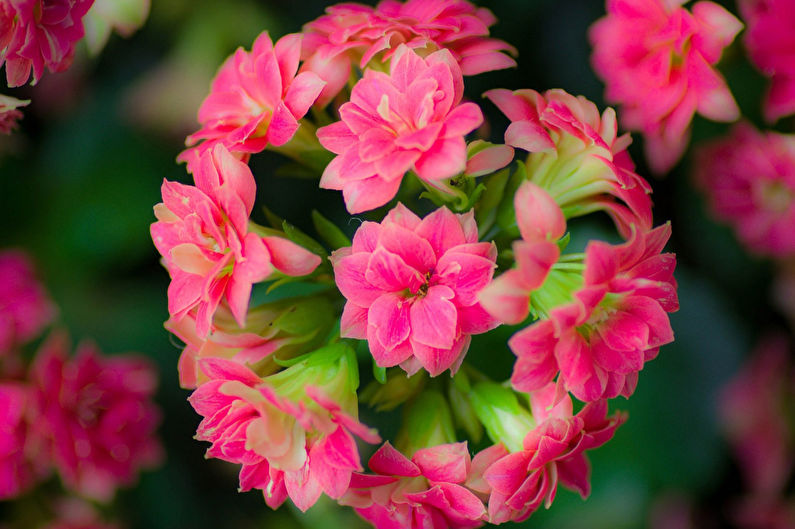


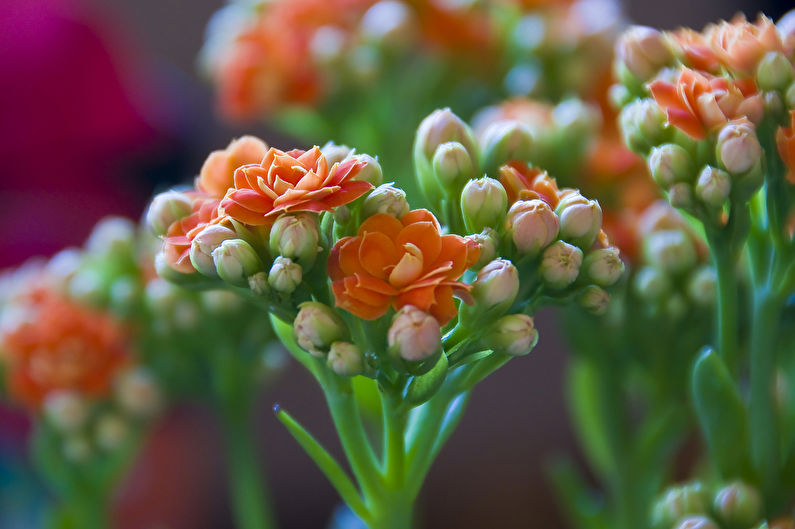
Types of Kalanchoe
In total, there are more than 200 species in nature, but only about ten take root at home. In this case, Kalanchoe are decorative or medicinal. But first things first.
Kalanchoe Blossfeld
The plant grows up to 30 cm, differs in even, elongated leaves and small red flowers. Flowering lasts throughout the spring. At this time, it must be stored in the sun, but after the end of the period to hide in a secluded place, regularly pruning the buds.
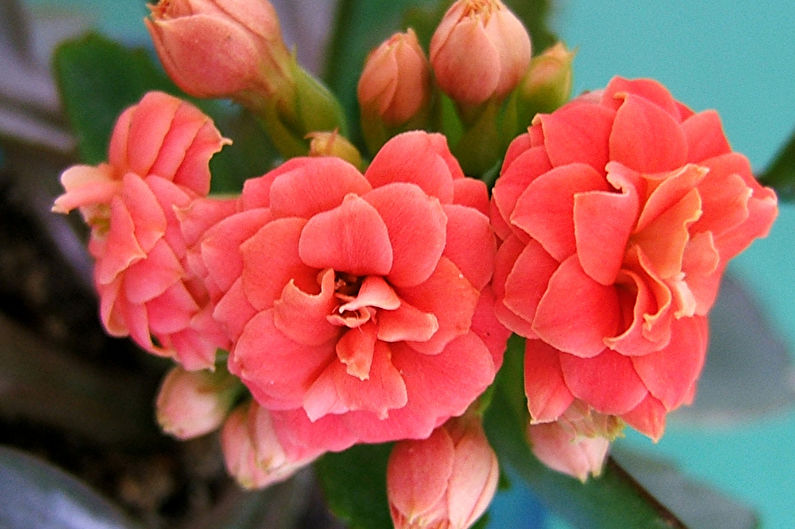
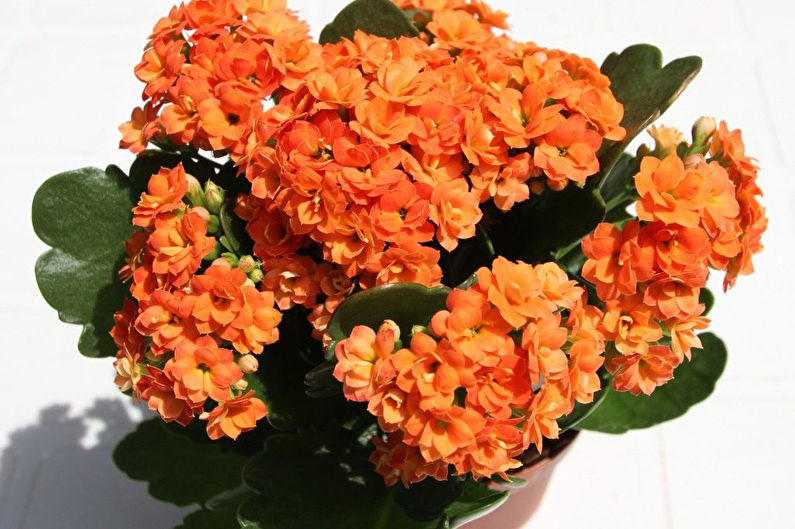
Kalanchoe Benta
This is a large shrub, the height of which can reach up to one meter. Unlike the previous species, its leaves grow up to 40 cm in length and alternate in six pairs. Flowering begins in mid spring, when the Kalanchoe is covered with small inflorescences with elongated petals.
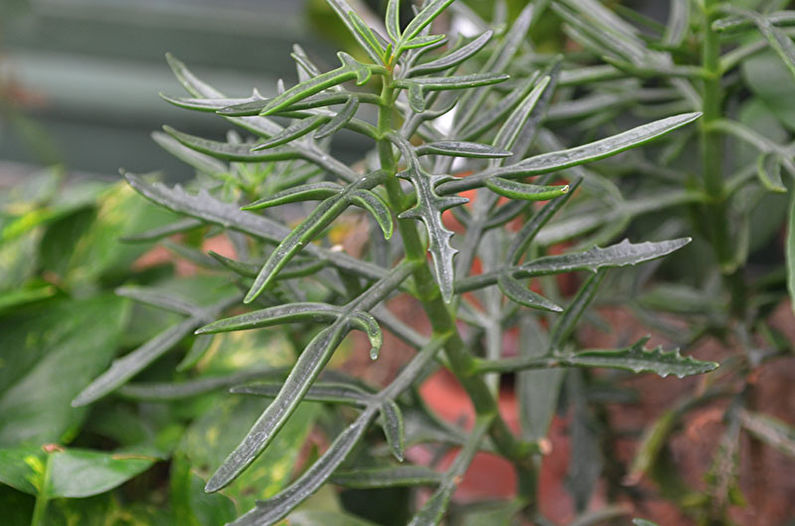
Briefillum Degremona
On the stem of the plant are large, even leaves that slightly curl toward the middle. Their color smoothly passes from the gray-green top to the green bottom, which is decorated with purple dots. The maximum height to which such a kalanchoe grows is 50 cm. Brood buds appear between the serrated edges over time.
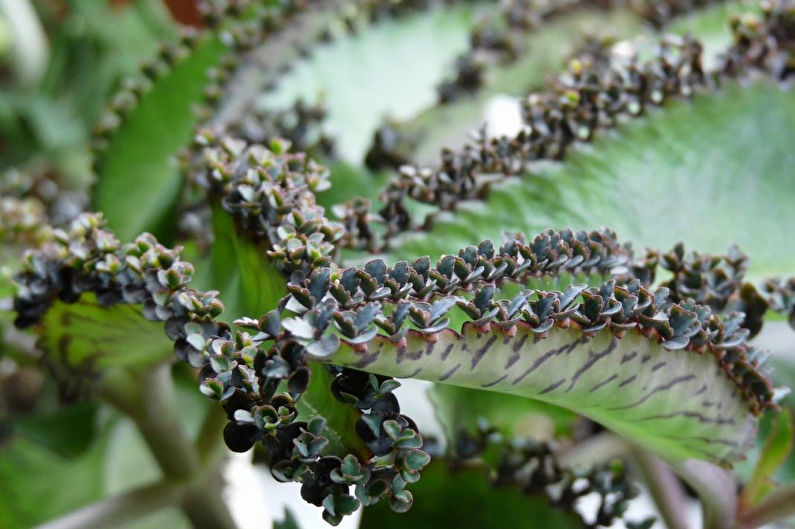
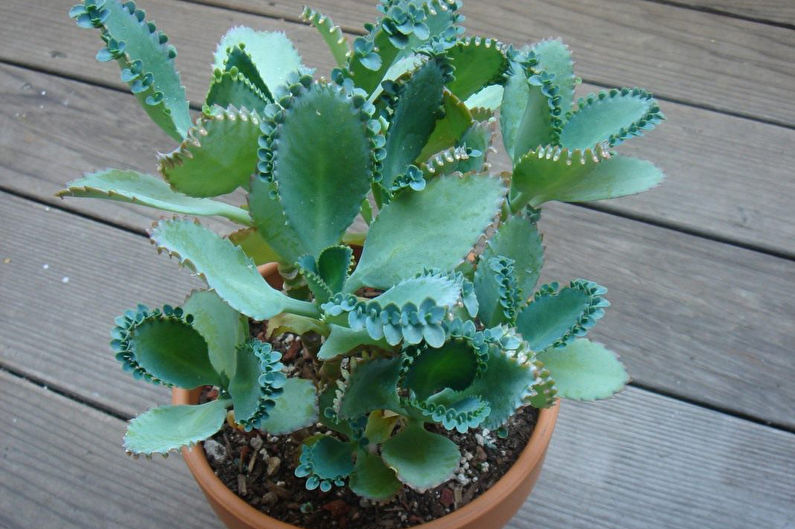
Kalanchoe pinnate
Belongs to herbaceous plants and does not look so spectacular. Cirrus leaves change color over time in the direction of a red tint, form teeth on the edges in which buds arise.
It is considered not only the most hardy species, but also good for health - the juice of cirrus Kalanchoe can be found in the pharmacy.
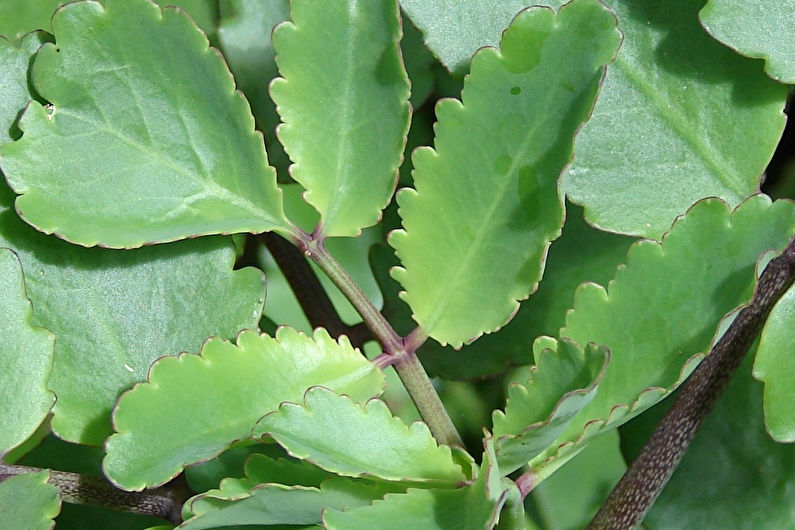
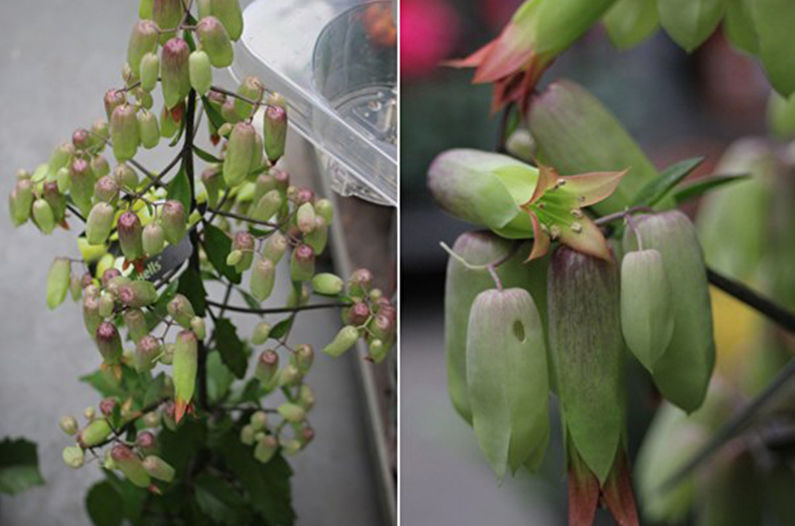
Kalanchoe Mangin
Owners who cannot afford to grow large plants are advised to pay attention to this flower, which is distinguished by its miniature size - only 15 cm. Another advantage of Mangin’s Kalanchoe is the unusual appearance of inflorescences, they resemble bells.

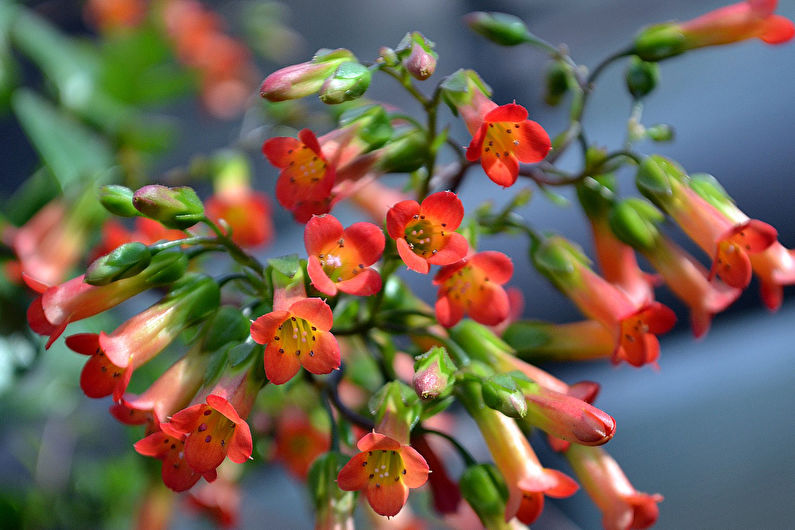
Kalanchoe dissected (lobed)
The people also call it “deer horns”, due to the characteristic shape of the leaves, which have deep cuts along the edges. On it grow tubular small flowers of yellow color. Lobed Kalanchoe looks very impressive, grows quickly and can reach a height of more than one meter, which requires constant care.
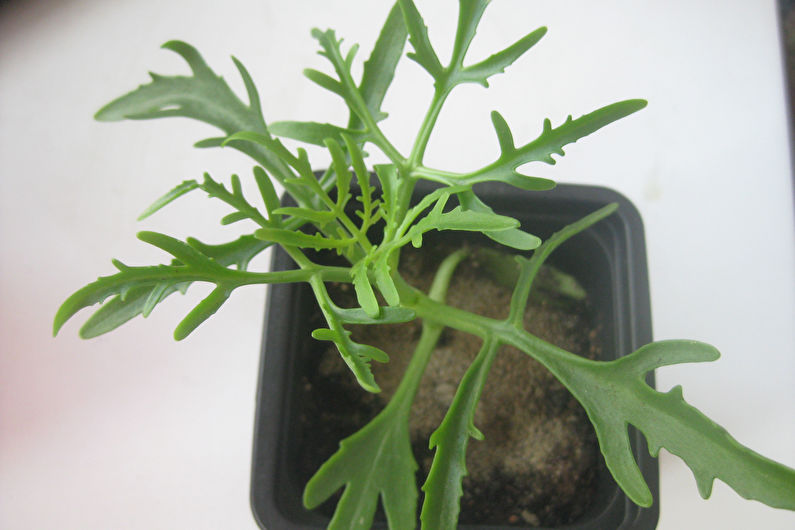
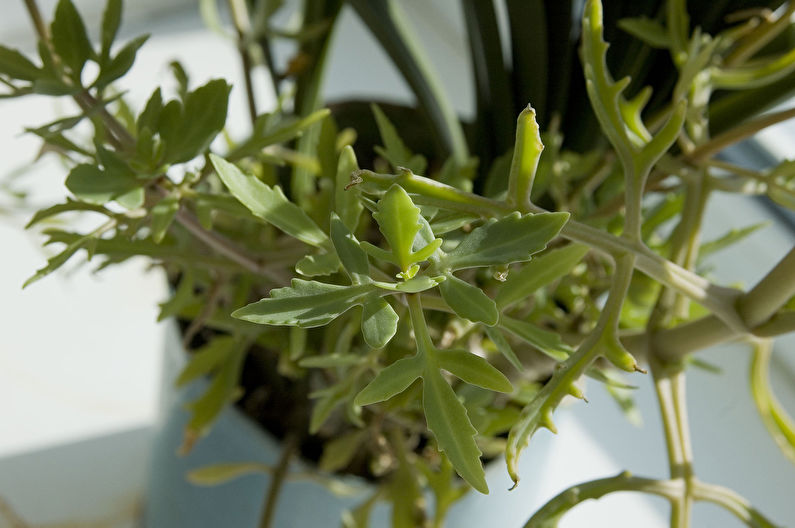
Kalanchoe fiery
For its beauty, many people fell in love with this species, whose flowers, bright fiery, grow to three millimeters.The height of an adult plant varies from 30 to 40 cm. Beautiful neat oval-shaped leaves are thinner at the base. Flaming Kalanchoe, unlike other species, is more whimsical, requires a condition with a moderately cool temperature.

Paniculate-flowered Kalanchoe
A rare plant that is not often found even in the collections of florists. Perennial, herbaceous, reach about 60 cm in height. With age, wide long leaves turn red at the edges, which makes the flower more exotic. Inflorescences in the form of panicles appear in mid-spring. The most popular variety that can be grown at home is Chelsea.
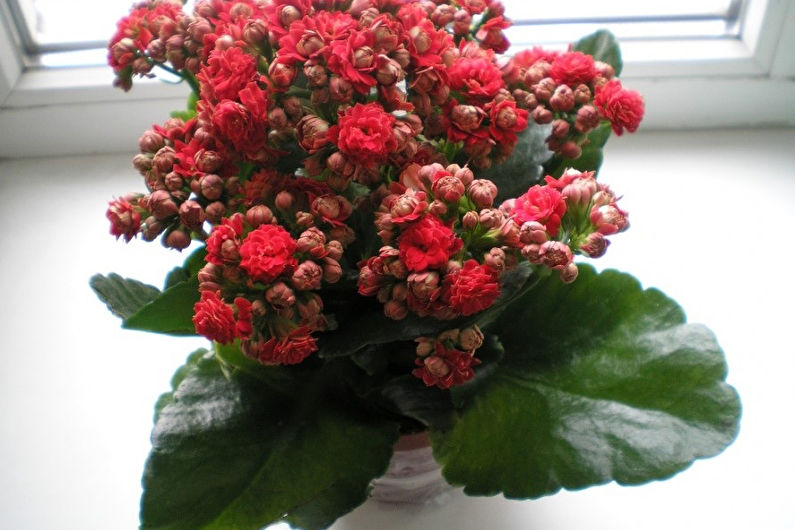
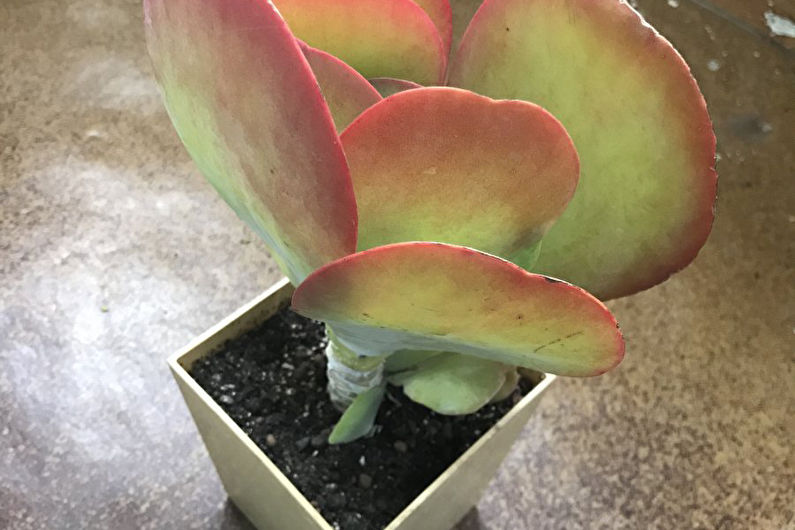
Kalanchoe Behar
A small semi-artisanal plant, which is found in natural conditions in Madagascar. With regular care at home, it grows to 45 cm.
Over time, triangular pale green leaves with wavy edges appear. Unfortunately, Behar Kalanchoe blooms quite rarely and requires special care for this.
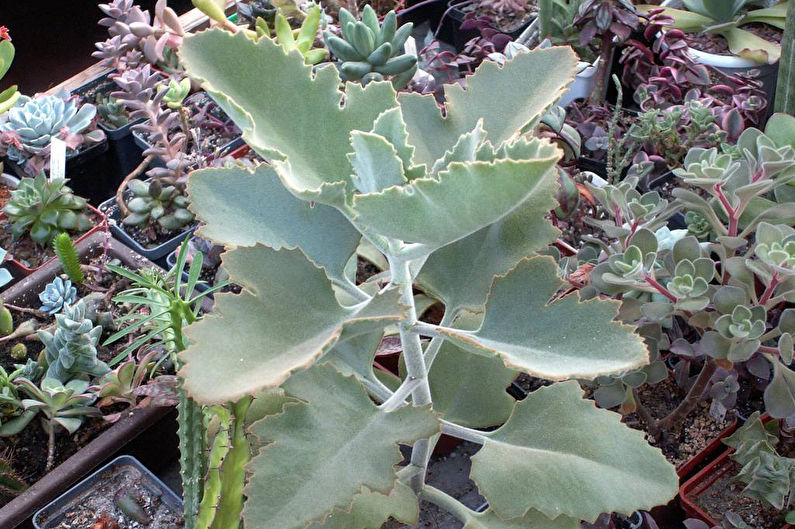
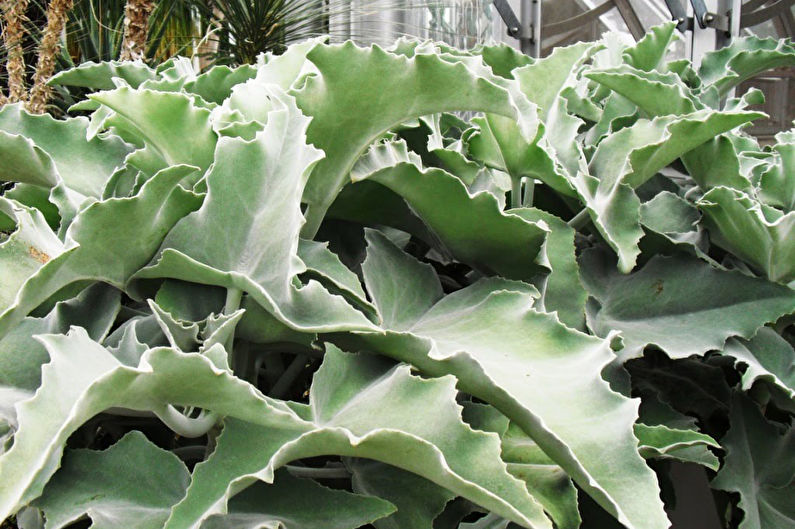
Healing properties
Separately, I would like to say about the healing properties of Kalanchoe. Even if you are not a supporter of traditional medicine, it will not be out of place to find out about the beneficial effects of the plant growing in your house.
Two species are considered medicinal - Briofillum Degremona and Cirrus Kalanchoe. However, all varieties have a more or less positive effect.
In addition, the plant is able to purify the air from harmful microbes, thereby disinfecting it. And some florists claim that it spreads positive energy that can improve mood.
Leaves also have healing powers, the juice of which copes with colds and heals wounds. All thanks to the rich composition, including biologically active substances: organic acids, polysaccharides, vitamins, mineral salts and other useful elements.
But even if you don’t have to try on yourself the charms of traditional medicine and improve the atmosphere in the house, Kalanchoe can cope with the decorative functions no worse.
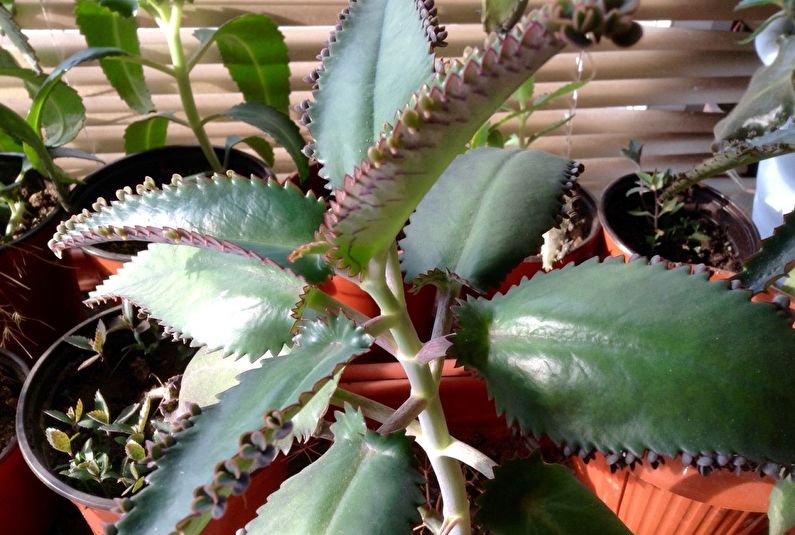
How to plant Kalanchoe?
"Get" such a green pet is not difficult, whether it be an escape or a grown plant. Kalanchoe propagates vegetatively and by seed.
In any case, first you need to prepare the ground. To do this, you will need ingredients in the following proportions: four parts of hardwood, two parts of turf, one part of compost and one part of sand. In the pot for the future flower, you need to add drainage.
When buying finished land, choose a product for succulents that does not hold water.
Consider three possible landing methods:
The first is planting cuttings. For this, it is necessary to cut off a small stalk from an adult flower and put it in water until the roots appear. When they reach 1-1.5 cm, the process is planted in the soil. Such a “calf” Kalanchoe requires more frequent watering than adults.
The second is the planting of a separate sheet, which is placed in wet sand, covered with a transparent container. Before the first roots appear, it is impossible to moisten the sand - only the upper part of the plant. When it takes root a little, transplantation into the prepared soil is carried out.
The third way is planting seeds. After waiting for spring, we press the seeds of Kalanchoe into the ground, cover with a bag and put in a sunny place. After the appearance of two leaves, they are planted in small pots, and when 4 shoots appear, the stems are cut again - now they are ready for full growth. With proper care, Kalanchoe planted in this way will bloom faster than anyone.
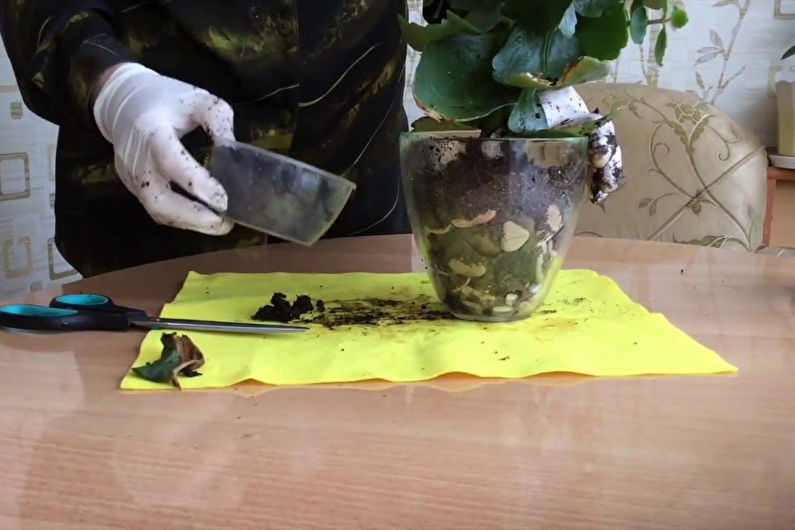
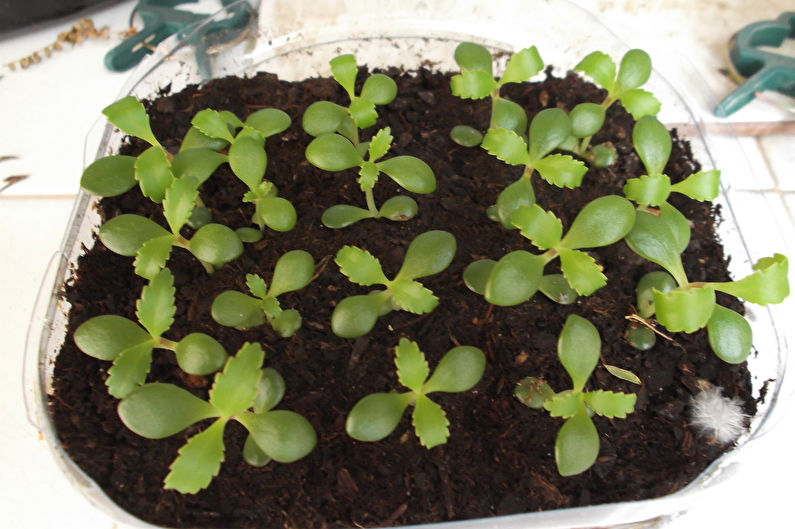
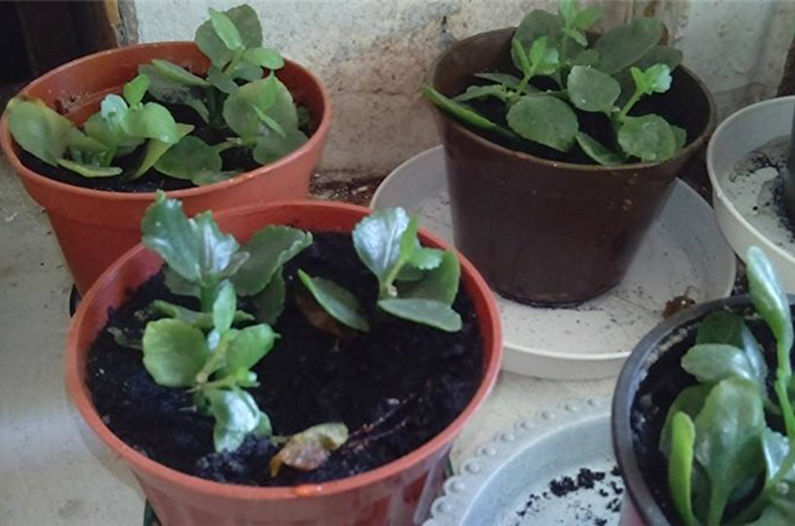
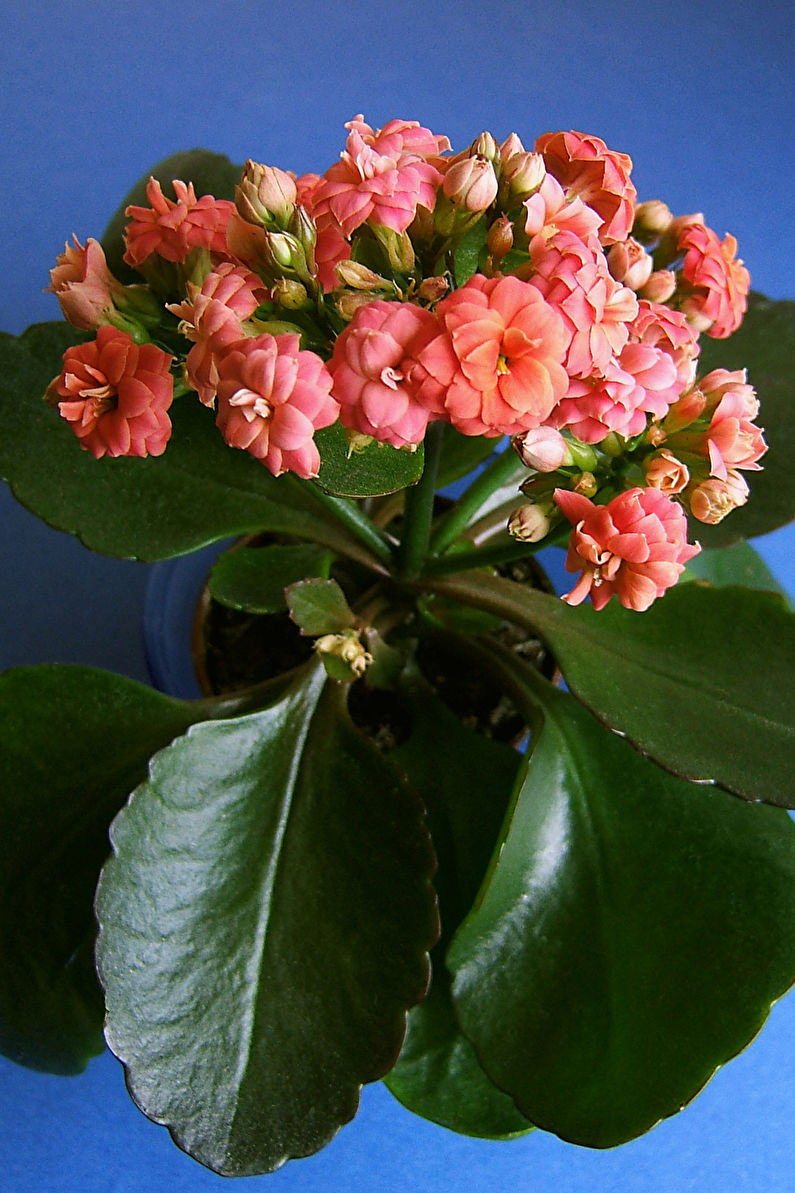
Kalanchoe care at home
The good news for busy or forgetful people is that Kalanchoe is very unpretentious, resistant to diseases and pests. Choosing the right place and following the simple rules of care, you will get yourself a reliable "green friend" for more than one year.
Lighting
An ideal place for Kalanchoe is the western or eastern window, where scattered sun rays fall. With intense lighting, the plant will grow a little worse, but will not disappear. It is possible to understand that he lacks solar energy in appearance: the stems are stretched and weaken, and the leaves become duller.


Temperature
And here Kalanchoe is picky. The optimum temperature varies from 10 to 25 degrees, but in a hotter period it is better to increase the frequency of watering.

Watering
Kalanchoe accumulates water in the stems and leaves, so it can survive a long absence of water. You can not say about excess moisture - the roots of the plant will begin to rot, fungi or rot will appear.
In winter, the frequency of watering should be no more than once every 10-14 days. In the summer, this figure can be increased. But quantity is not the main condition. It is important to saturate Kalanchoe with water correctly. To do this, the pot is completely filled with liquid, and when it is absorbed into the soil, the residue is drained. Thus it turns out to maintain a balance.

Pruning
Owners of decorative species of Kalanchoe will have to do this closely, since flowering takes away a lot of their strength. It is cut as low as possible, as are the rotten parts. Do not worry about the beauty of the plant - it grows very quickly.

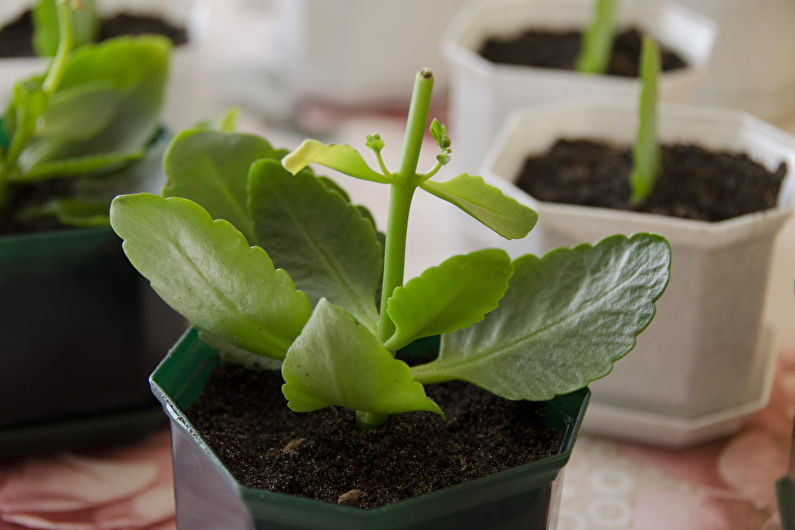
Top dressing
Once a month, the plant must be "fed" with complex fertilizers that are suitable for succulents. Otherwise, it will not bloom. This applies to the summer period, but in winter it is better not to do this. In addition, an excess of fertilizers will negatively affect Kalanchoe, so always measure a smaller proportion.
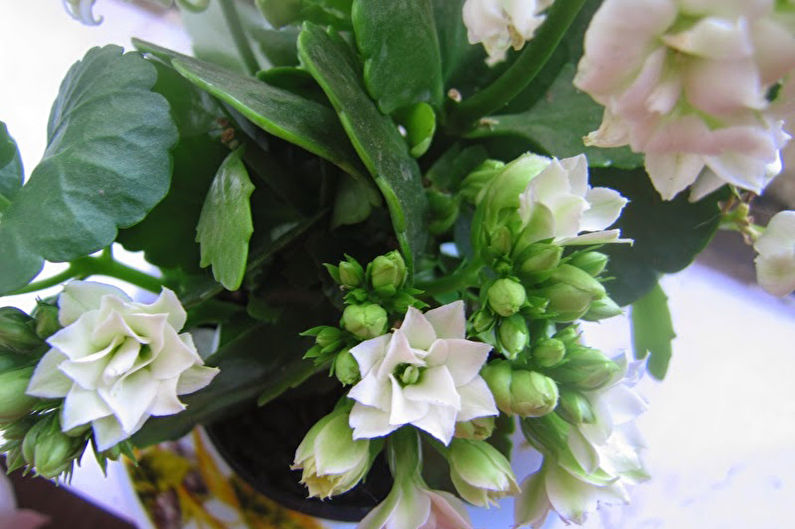
Transfer
About once a year, the plant needs to be sent to a new "house", which is several centimeters larger, since it grows very quickly. An adult flower can be sprinkled with earth, only if the roots do not extend beyond the boundaries of the container.

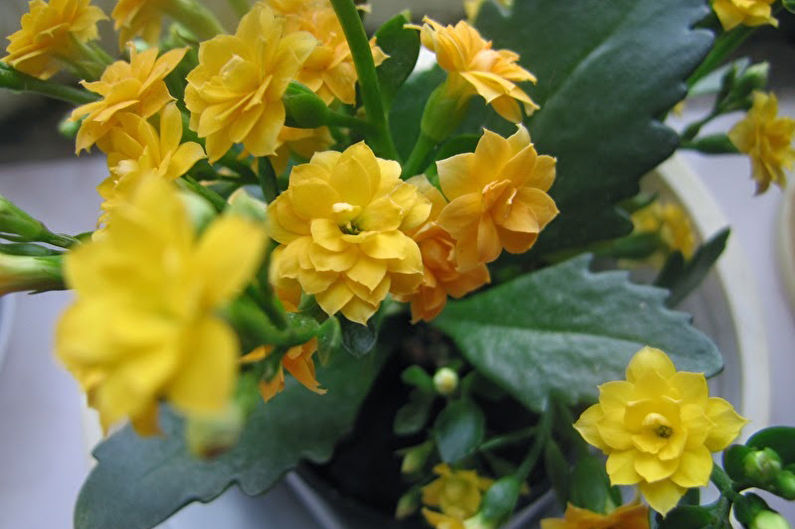
Video: Kalanchoe - all about leaving

